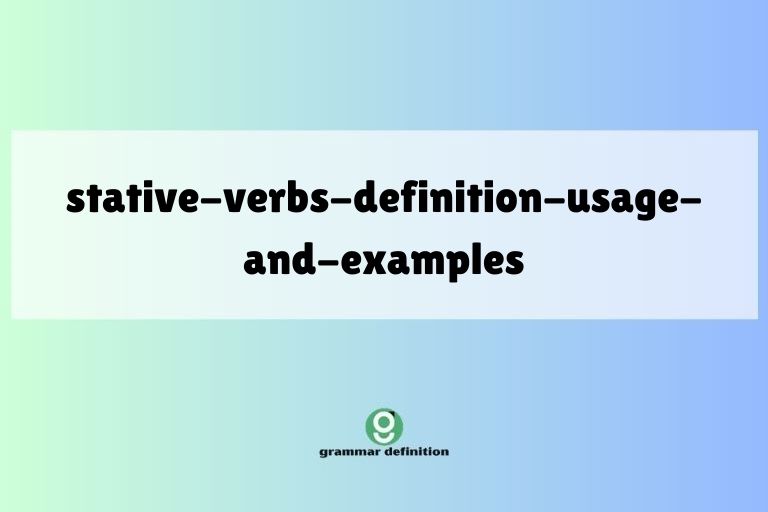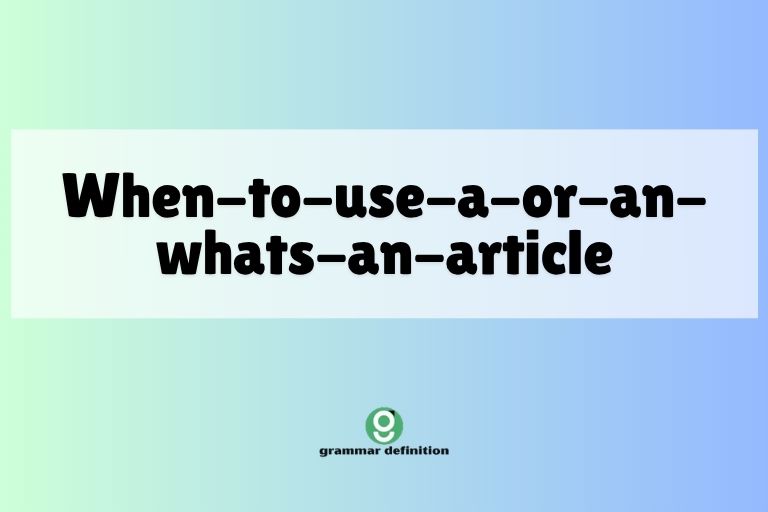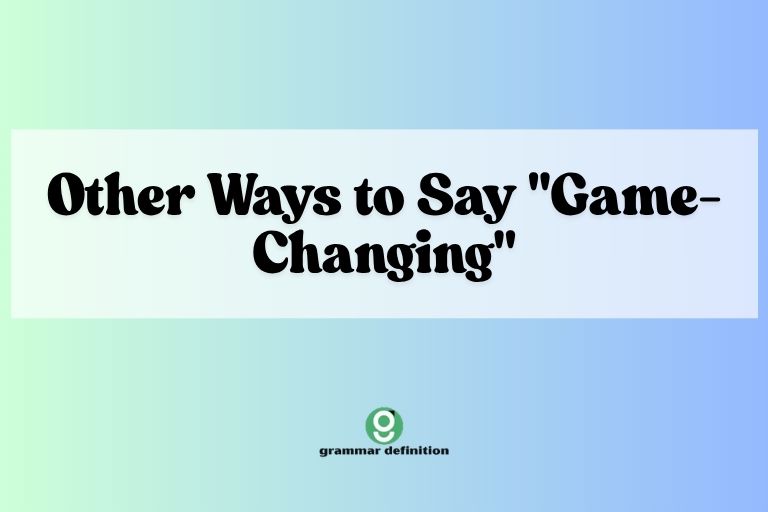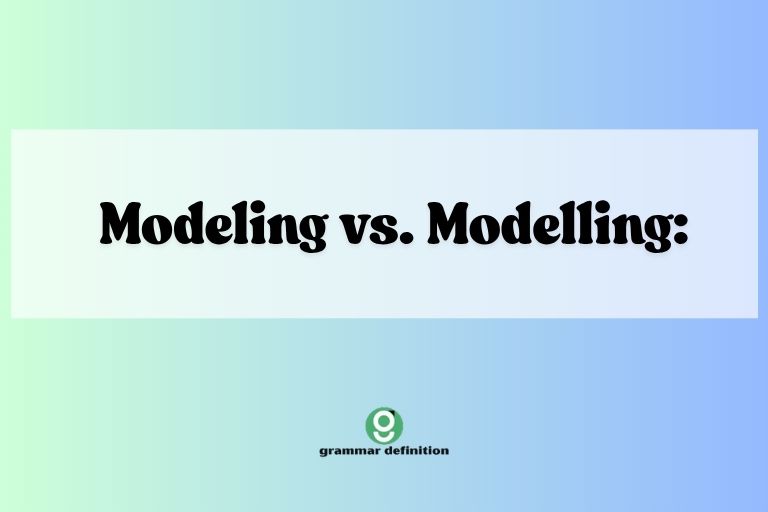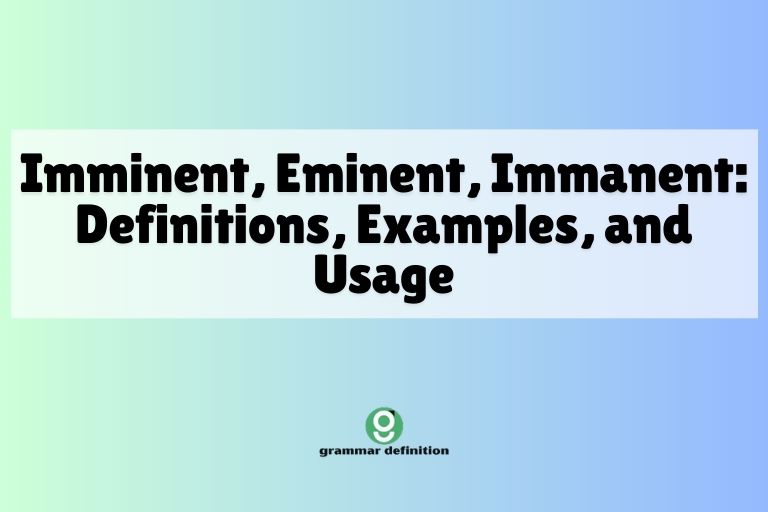Other Ways to Say “By Way of Introduction”
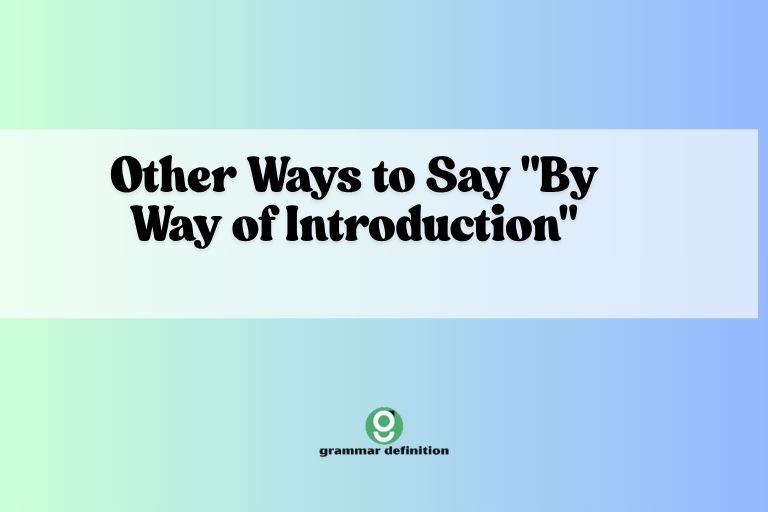
The phrase “by way of introduction” serves as a polite and formal way to preface something you’re about to say or introduce. However, relying on the same phrase repeatedly can make your language sound monotonous.
Mastering alternative expressions not only enhances your communication skills but also adds variety and sophistication to your speech and writing. This article explores various ways to introduce topics, people, or ideas, providing you with a comprehensive toolkit for effective communication.
Whether you’re a student aiming to improve your essay writing or a professional seeking to refine your presentation skills, this guide will equip you with the knowledge and confidence to express yourself with greater precision and flair.
Table of Contents
- Definition and Context
- Structural Breakdown
- Categories of Introductory Phrases
- Examples
- Usage Rules
- Common Mistakes
- Practice Exercises
- Advanced Topics
- FAQ
- Conclusion
Definition and Context
The phrase “by way of introduction” is an introductory phrase used to signal that you are about to provide preliminary information or introduce a new subject, person, or idea. It essentially serves as a roadmap for your audience, preparing them for what is to come.
Understanding the nuances of this phrase and its alternatives is crucial for effective communication, as it allows you to tailor your language to suit different contexts and audiences. It helps in creating a smooth transition and sets the tone for the subsequent information.
The phrase can be used in both formal and informal settings, although it leans more towards formal usage. Its primary function is to provide context and clarity.
In formal settings like presentations or academic papers, it lends a sense of professionalism. In informal settings, while less common, it can still be used to introduce a more serious or detailed topic.
The key is to use it judiciously and to be aware of the overall tone you wish to convey.
Structural Breakdown
The phrase “by way of introduction” typically consists of three main components: the preposition “by,” the noun “way,” and the prepositional phrase “of introduction.” The preposition “by” indicates the means or method, while “way” refers to the manner or course of action. Together, “by way” suggests a specific approach or route.
The “of introduction” phrase specifies the purpose of this approach, which is to introduce something. Grammatically, it functions as an adverbial phrase, modifying the verb that follows it, indicating how the introduction is being made.
The structure can be varied slightly depending on the alternative phrase used. For example, phrases like “as a preface” or “to begin with” maintain a similar introductory function but use different grammatical structures.
“As a preface” uses the preposition “as” followed by a noun phrase, while “to begin with” uses an infinitive phrase acting as an adverbial. Understanding these structural differences allows you to choose the most appropriate phrase based on the grammatical context of your sentence.
Categories of Introductory Phrases
There are several categories of phrases that can be used instead of “by way of introduction,” each with its own subtle nuances. These categories include general introductions, phrases for introducing people, phrases for introducing topics, and phrases for introducing ideas.
Additionally, these phrases can be further categorized as either formal or informal, depending on the context in which they are used. Understanding these distinctions is important for choosing the most appropriate phrase for a given situation.
General Introductions
These phrases are versatile and can be used in a variety of contexts to simply introduce what you are about to say.
Introducing People
These phrases are specifically used to introduce someone to an audience or another individual.
Introducing Topics
These phrases signal that you are about to delve into a new subject or area of discussion.
Introducing Ideas
These phrases indicate that you are about to present a new concept, theory, or perspective.
Formal Introductions
These phrases are best suited for professional or academic settings, conveying a sense of authority and respect.
Informal Introductions
These phrases are appropriate for casual settings, fostering a more relaxed and conversational tone.
Examples
The following tables provide a variety of examples of alternative phrases for “by way of introduction,” categorized by their specific function and level of formality. Each example is accompanied by a sentence illustrating its usage.
General Introductions
These phrases can be used in a variety of contexts to signal that you are about to begin speaking or writing about a particular subject.
| Alternative Phrase | Example Sentence |
|---|---|
| To begin with, | To begin with, let’s discuss the project’s objectives. |
| Firstly, | Firstly, I’d like to thank everyone for attending. |
| Initially, | Initially, the plan was to launch the product in July. |
| As a starting point, | As a starting point, we need to define the scope of the research. |
| In the first place, | In the first place, we must consider the ethical implications. |
| To start off, | To start off, I’ll give a brief overview of the company’s history. |
| At the outset, | At the outset, it’s important to establish clear guidelines. |
| As an initial step, | As an initial step, we need to gather data from various sources. |
| To kick things off, | To kick things off, let’s have a quick icebreaker activity. |
| Primarily, | Primarily, our goal is to improve customer satisfaction. |
| Before anything else, | Before anything else, we need to address the safety concerns. |
| First and foremost, | First and foremost, we prioritize the well-being of our employees. |
| To commence with, | To commence with, I will present the financial report. |
| In the beginning, | In the beginning, the company was just a small startup. |
| As a preliminary, | As a preliminary, let’s review the agenda for the meeting. |
| To set the stage, | To set the stage, I’ll provide some background information. |
| By way of opening, | By way of opening, I’d like to share a personal anecdote. |
| As an introduction, | As an introduction, let me outline the main points. |
| For starters, | For starters, we should analyze the current market trends. |
| To initiate, | To initiate, let’s go around the room and introduce ourselves. |
| As a lead-in, | As a lead-in, I’ll briefly touch upon the previous topic. |
| By way of preamble, | By way of preamble, I will explain the context of this discussion. |
| To preface, | To preface, I want to acknowledge the challenges we face. |
| As a prelude, | As a prelude, I will share some relevant statistics. |
| To preface this, | To preface this, it’s important to understand the historical context. |
Introducing People
These phrases are specifically used to introduce individuals to an audience or to other people.
| Alternative Phrase | Example Sentence |
|---|---|
| Let me introduce, | Let me introduce my colleague, Sarah. |
| I’d like you to meet, | I’d like you to meet John, our new marketing manager. |
| Allow me to present, | Allow me to present Dr. Emily Carter, a leading expert in the field. |
| This is, | This is my friend, David. |
| I’d like to introduce you to, | I’d like to introduce you to the CEO of the company. |
| May I present, | May I present the guest of honor, Mrs. Eleanor Roosevelt. |
| I want you to meet, | I want you to meet my parents. |
| Please meet, | Please meet the team members who will be working on your project. |
| I have the pleasure of introducing, | I have the pleasure of introducing our keynote speaker. |
| It’s my honor to introduce, | It’s my honor to introduce a true visionary in the industry. |
| I’m pleased to present, | I’m pleased to present the winner of this year’s award. |
| I would like to acquaint you with, | I would like to acquaint you with our research team. |
| Meet, | Meet my sister, Lisa. |
| Have you met, | Have you met our new intern, Alex? |
| This is my colleague, | This is my colleague, Michael, from the finance department. |
| Let me acquaint you with, | Let me acquaint you with the members of the board. |
| Allow me to introduce my associate, | Allow me to introduce my associate, Mr. Thompson. |
| I present to you, | I present to you our guest speaker for tonight. |
| I’d like to present, | I’d like to present the team that made this project possible. |
Introducing Topics
These phrases are useful when you want to introduce a new topic or subject matter.
| Alternative Phrase | Example Sentence |
|---|---|
| Regarding, | Regarding the budget, we need to make some adjustments. |
| Concerning, | Concerning the upcoming conference, registration is now open. |
| With respect to, | With respect to the legal aspects, we need to consult with a lawyer. |
| In relation to, | In relation to the previous discussion, I have some additional points. |
| As for, | As for the marketing strategy, we’re planning a new campaign. |
| On the subject of, | On the subject of climate change, there’s a lot of debate. |
| When it comes to, | When it comes to customer service, we strive for excellence. |
| Speaking of, | Speaking of vacations, I’m planning a trip to Italy. |
| In terms of, | In terms of performance, the team has exceeded expectations. |
| With regard to, | With regard to your request, we’re still reviewing the options. |
| Turning to, | Turning to the next item on the agenda, let’s discuss the marketing plan. |
| Let’s move on to, | Let’s move on to the topic of employee benefits. |
| Now, let’s consider, | Now, let’s consider the potential risks involved. |
| Regarding the matter of, | Regarding the matter of the company’s future, we need to make some strategic decisions. |
| As regards, | As regards the new regulations, we need to ensure compliance. |
| On the topic of, | On the topic of artificial intelligence, there have been many advancements. |
| Referring to, | Referring to the email I sent earlier, I have clarified the details. |
| In connection with, | In connection with your inquiry, I have attached the relevant documents. |
| With reference to, | With reference to our previous conversation, I have prepared the report. |
| In respect to, | In respect to your concerns, we are taking steps to address them. |
| Concerning the issue of, | Concerning the issue of data privacy, we are implementing new security measures. |
| Considering, | Considering the circumstances, we have decided to postpone the event. |
Introducing Ideas
These phrases signal that you are about to present a new concept or perspective.
| Alternative Phrase | Example Sentence |
|---|---|
| To illustrate, | To illustrate, let me give you an example. |
| For instance, | For instance, consider the case of Apple Inc. |
| To give you an idea, | To give you an idea, imagine a world without technology. |
| As an example, | As an example, let’s look at the marketing campaign. |
| By way of example, | By way of example, consider the impact of social media. |
| To demonstrate, | To demonstrate, I will conduct a live experiment. |
| For the sake of argument, | For the sake of argument, let’s assume the hypothesis is true. |
| Let’s say, | Let’s say we invest in this new technology. |
| Suppose, | Suppose we increase the budget by 10%. |
| Imagine, | Imagine a world powered by renewable energy. |
| Consider, | Consider the implications of this decision. |
| To clarify, | To clarify, I mean that we need to improve communication. |
| To elaborate, | To elaborate, let me provide more details. |
| To explain further, | To explain further, I will present some supporting evidence. |
| In other words, | In other words, we need to be more efficient. |
| That is to say, | That is to say, we need to focus on our core competencies. |
| To put it simply, | To put it simply, we need to cut costs. |
| The point is, | The point is, we need to take action now. |
| What I mean is, | What I mean is, we need to change our approach. |
| Basically, | Basically, we need to improve our products. |
| Essentially, | Essentially, we need to innovate. |
| In essence, | In essence, we need to create value for our customers. |
Formal Introductions
These phrases are suitable for professional or academic contexts where a more serious tone is desired.
| Alternative Phrase | Example Sentence |
|---|---|
| In order to commence, | In order to commence, the board must approve the proposal. |
| With due respect, | With due respect, I must disagree with your assessment. |
| Pursuant to, | Pursuant to the agreement, we are obligated to fulfill the terms. |
| In accordance with, | In accordance with the regulations, we must adhere to these guidelines. |
| Herein, | Herein lies the core of the argument. |
| Heretofore, | Heretofore, we have not encountered such challenges. |
| For the purpose of, | For the purpose of this investigation, we will gather evidence. |
| In light of, | In light of recent events, we must reconsider our strategy. |
| Given that, | Given that we have limited resources, we must prioritize. |
| Considering the aforementioned, | Considering the aforementioned factors, we can conclude that… |
| On this occasion, | On this occasion, we celebrate the company’s anniversary. |
| It is my privilege to, | It is my privilege to address such a distinguished audience. |
| I am honored to, | I am honored to present this award to you. |
| It is with great pleasure that, | It is with great pleasure that I introduce our guest speaker. |
| I deem it an honor to, | I deem it an honor to be part of this project. |
| It gives me immense pleasure to, | It gives me immense pleasure to announce the winner. |
| Distinguished guests, | Distinguished guests, welcome to the annual gala. |
| Ladies and gentlemen, | Ladies and gentlemen, please give a warm welcome to our CEO. |
| Esteemed colleagues, | Esteemed colleagues, let us collaborate to achieve our goals. |
| Respected members, | Respected members, your contributions are highly valued. |
| Honorable attendees, | Honorable attendees, thank you for your presence. |
| In the presence of, | In the presence of our esteemed guests, we commence the ceremony. |
| Before this assembly, | Before this assembly, I wish to express my gratitude. |
Informal Introductions
These phrases are suitable for casual settings where a more relaxed tone is desired.
| Alternative Phrase | Example Sentence |
|---|---|
| So, | So, what are we going to do today? |
| Well, | Well, let’s get started, shall we? |
| Okay, | Okay, everyone, listen up. |
| Alright, | Alright, let’s begin the game. |
| Listen up, | Listen up, I have something important to say. |
| Guess what, | Guess what, I have some exciting news! |
| By the way, | By the way, did you hear about the new movie? |
| Speaking of which, | Speaking of which, have you seen the latest episode? |
| Just so you know, | Just so you know, the meeting has been postponed. |
| FYI, | FYI, the deadline has been extended. |
| Heads up, | Heads up, there’s going to be a pop quiz tomorrow. |
| Just saying, | Just saying, it might rain later. |
| For the record, | For the record, I was against this idea from the start. |
| Just to let you know, | Just to let you know, I won’t be able to make it to the party. |
| You know, | You know, I was thinking about going to the beach. |
| Like, | Like, I don’t know what to do. |
| So yeah, | So yeah, that’s pretty much it. |
| Anyhow, | Anyhow, what’s been happening? |
| Anyway, | Anyway, let’s get back to the topic. |
| Right then, | Right then, let’s make a start. |
| So then, | So then, what’s the plan? |
| Now then, | Now then, where were we? |
Usage Rules
When choosing an alternative to “by way of introduction,” it’s essential to consider the context, audience, and desired tone. In formal settings, opt for phrases like “Allow me to present” or “In order to commence,” which convey respect and professionalism.
In informal settings, phrases like “So,” “Well,” or “By the way” can create a more relaxed and conversational atmosphere. Always ensure that the phrase you choose aligns with the overall tone and purpose of your communication.
Another important rule is to avoid overuse of any single introductory phrase. Varying your language not only keeps your audience engaged but also demonstrates a command of the English language.
Pay attention to the flow of your speech or writing and choose phrases that create smooth transitions between different topics or ideas. Consider the specific function you need the phrase to serve—whether it’s introducing a person, topic, or idea—and select the most appropriate option accordingly.
For example, when introducing a person, using phrases like “I’d like you to meet” or “Let me introduce” are more suitable than generic phrases like “To begin with.”
Common Mistakes
One common mistake is using formal phrases in informal settings, which can sound stilted or pretentious. For example, saying “It is my privilege to introduce you to…” at a casual gathering might seem out of place.
Conversely, using informal phrases in formal settings can undermine your credibility and professionalism. For instance, starting a presentation with “So, like, let’s talk about…” is generally inappropriate.
Another common error is using introductory phrases redundantly. Avoid starting multiple consecutive sentences or paragraphs with similar phrases, as this can make your communication repetitive and monotonous.
Instead, try to vary your language and use different techniques to transition between ideas. Also, be mindful of the grammatical structure of the phrase you choose.
Ensure that it fits seamlessly into the sentence and that the grammar is correct. For example, using “Regarding to” instead of “Regarding” is a common grammatical error.
Here are some specific examples of common mistakes and their corrections:
| Incorrect | Correct | Explanation |
|---|---|---|
| So, like, let’s begin. | Let’s begin. | The informal interjections “so” and “like” are unnecessary and unprofessional in a formal setting. |
| Regarding to the issue… | Regarding the issue… | The preposition “regarding” does not require the addition of “to.” |
| I’d like you to meet to my friend. | I’d like you to meet my friend. | The preposition “to” is redundant after “meet” in this context. |
| In order to commencing… | In order to commence… | “Commence” is the base form of the verb and should not be used in the gerund form (-ing) after “to.” |
| By the way, I want you to meet to John. | By the way, I want you to meet John. | The preposition “to” is unnecessary after “meet.” |
Practice Exercises
Test your understanding of alternative introductory phrases with these exercises. Choose the most appropriate phrase to complete each sentence, considering the context and desired tone.
Exercise 1: Fill in the Blanks
Choose the best phrase from the options provided to fill in the blank in each sentence.
| Question | Options | Answer |
|---|---|---|
| _______, I would like to thank everyone for coming. | a) So, b) Firstly, c) Just saying | b) Firstly |
| _______ the budget, we need to make some adjustments. | a) Regarding, b) Guess what, c) Well | a) Regarding |
| _______, let’s consider the implications of this decision. | a) Imagine, b) Consider, c) FYI | b) Consider |
| _______ I’d like you to meet my colleague, Sarah. | a) Heads up, b) Let me introduce, c) You know | b) Let me introduce |
| _______ the new regulations, we need to ensure compliance. | a) As regards, b) Okay, c) Just to let you know | a) As regards |
| _______, what are we going to do today? | a) Anyway, b) To clarify, c) So | c) So |
| _______, it’s important to understand the historical context. | a) To preface this, b) Alright, c) Basically | a) To preface this |
| _______ I must disagree with your assessment. | a) With due respect, b) By the way, c) Like | a) With due respect |
| _______ we increase the budget by 10%? | a) Suppose, b) To put it simply, c) So yeah | a) Suppose |
| _______ I have something important to say. | a) Listen up, b) In essence, c) In order to commence | a) Listen up |
Exercise 2: Sentence Rewriting
Rewrite the following sentences using an alternative phrase for “by way of introduction” that is more appropriate for the given context.
| Original Sentence | Rewritten Sentence |
|---|---|
| By way of introduction, I’d like to present our keynote speaker. | It is with great pleasure that I introduce our keynote speaker. |
| By way of introduction, we need to discuss the budget. | Regarding the budget, we need to have a discussion. |
| By way of introduction, let me tell you about my weekend. | So, let me tell you about my weekend. |
| By way of introduction, I want you to meet my friend, John. | I’d like you to meet my friend, John. |
| By way of introduction, we will now commence the meeting. | In order to commence, we will start the meeting. |
| By way of introduction, let’s talk about the weather. | Speaking of which, let’s talk about the weather. |
| By way of introduction, I’d like to clarify my previous statement. | To clarify, I’d like to restate my previous statement. |
| By way of introduction, consider the following example. | For instance, consider the following example. |
| By way of introduction, I want to say thank you to all of you. | Firstly, I want to say thank you to all of you. |
| By way of introduction, I’d like to explain the main points. | As an introduction, let me outline the main points. |
Advanced Topics
For advanced learners, exploring the subtle nuances of introductory phrases can further enhance their communication skills. Consider the use of rhetorical devices such as understatement or irony when employing these phrases.
For example, beginning a serious discussion with “Well, this is going to be fun…” can create a sense of irony and grab the audience’s attention. Similarly, using a formal phrase in an informal setting can be a humorous way to introduce a serious topic.
Another advanced technique is to combine multiple introductory phrases for added emphasis or clarity. For example, you could say, “Firstly, and most importantly,…” to highlight the significance of a particular point.
Experiment with different combinations to create unique and impactful introductions. Additionally, pay attention to the rhythm and cadence of your speech or writing when using these phrases.
Varying the length and structure of your introductions can create a more engaging and dynamic communication style.
FAQ
Here are some frequently asked questions about alternative ways to say “by way of introduction”:
- What is the best alternative to “by way of introduction” in a formal presentation?In a formal presentation, phrases like “Allow me to present,” “It is my honor to introduce,” or “I am pleased to present” are excellent choices. These phrases convey respect, professionalism, and a sense of importance.
- How can I introduce a new topic in an email without sounding repetitive?To avoid repetition, use phrases like “Regarding,” “Concerning,” “With respect to,” or “As for.” These phrases provide a clear transition to the new topic without being overly formal or informal.
- What are some informal ways to introduce a person?Informal phrases include “This is,” “I’d like you to meet,” or simply “Meet.” These phrases are suitable for casual settings and create a relaxed atmosphere.
- Is it appropriate to use “FYI” in a professional email?While “FYI” (For Your Information) is commonly used, it’s generally best to avoid it in very formal or high-stakes professional communications. It’s more appropriate for internal emails or quick updates within a team.
- How can I make my introductions more engaging?To make your introductions more engaging, consider starting with a question, a surprising statistic, or a relevant anecdote. This can capture the audience’s attention and create a sense of curiosity.
- What phrases should I avoid in formal writing?In formal writing, avoid using slang, colloquialisms, and overly casual phrases. Stick to more structured and professional language, such as “In accordance with,” “Pursuant to,” or “With regard to.”
- When should I use “In light of” as an introductory phrase?Use “In light of” when you want to introduce a topic or decision based on recent events or new information. For example, “In light of the recent budget cuts, we need to reassess our priorities.”
- What are some ways to introduce a new idea or concept?To introduce a new idea or concept, use phrases like “To illustrate,” “For instance,” “To give you an idea,” or “Consider.” These phrases help to clarify and provide context for the new concept.
Conclusion
Mastering alternative phrases for “by way of introduction” is an essential skill for effective communication. By understanding the nuances of different introductory phrases and their appropriate contexts, you can enhance the clarity, sophistication, and impact of your speech and writing.
Remember to consider the formality of the situation, the audience, and the specific
purpose of your introduction to make the most effective choice. With practice and attention to detail, you can confidently use a variety of introductory phrases to enrich your communication and leave a lasting impression.


